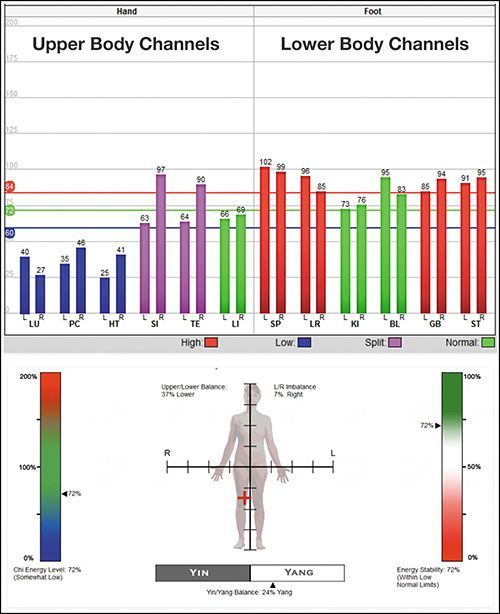Whether you accept it, avoid it or live somewhere in between, insurance coverage has become a defining issue for our profession. Patients increasingly expect to use their benefits, practitioners want to be compensated fairly for their time and expertise, and the system itself remains – at best – fragmented. The encouraging news is that coverage has expanded in meaningful ways. The challenging news is that reimbursement, across the board, remains inadequate.
Breech Baby: A Scientific Approach
You learned a classic cookbook style treatment strategy in college for treating breech baby presentation. I'm sure you've used it. The main ingredient: moxa at Urinary Bladder 67. What if I told you there just might be a better approach than this classical treatment strategy you learned in school? You'd probably question me: "Who are you to question the classics?" I don't blame you for asking. Really, I'm nobody special. I'm just another acupuncturist like any of you.
The exception? I happened to have a unique experience which caused a light bulb to go on in my head.
Typically, I treat a few breech baby presentations per year, but as luck would have it, one summer I wound up treating a bunch of breech baby moms right in a row. This caused me to recognize an obvious pattern in my diagnostic process which I hadn't previously noticed. Not a TCM pattern, but a pattern in channel flow.
Now, because I know what I am looking for, I recognize the same pattern over and over again. Why hadn't I heard of it or seen it before? It seems so obvious to me now. In fact, I've seen it with nearly every breech baby presentation since that experience. So, what makes me different from classical TCM practitioners? The answer is this: I'm using different diagnostic tools, which didn't exist when classical ancient Chinese medicine practitioners were recording their clinical experiences.
Background

I have a private clinic and I have a specialty in digital meridian imaging — measuring electrical skin resistance at acupuncture points and analyzing electrical channel diagnostics. I use a DMI device in my clinic to determine which channels are excess or deficient and to recognize imbalances between the left/right or upper/lower body segments. Once all of this information is in the computer, I then analyze it from multiple perspectives to help find the underlying problems in the energetic flow between the meridians. I use this information in addition to my training in classical TCM diagnosis to diagnose my patients.
Clinical Findings
After graphing a series of pregnant moms presenting with breech baby positioning, I found a common channel diagnostic pattern with all the patients. Figure 1 shows an example of the DMI analysis. Take a look at what is happening in the lower body channels versus the upper body channels. Instead of energy flowing nicely between the upper body and the lower body, there is a lot of energy stuck in the lower body. If you equate what you see in this graph analysis to TCM theory, it's a modern visual presentation of a Dai Mai imbalance.
Think about the symptoms most women are experiencing at the end stages of pregnancy. Lower body excess symptoms: edema, low back pain, a heavy sensation in the vaginal canal, hemorrhoids, varicose veins, constipation, etc. Upper body deficiency symptoms: difficulty catching breath, anxiety, arms falling asleep, carpal tunnel syndrome. My clinical experience now shows that graph findings such as this are typical for end of pregnancy patients.
It's also interesting to note that I find Dai Mai imbalances of the opposite presentation to be true for morning sickness in early pregnancy. Energy typically becomes stuck in the upper body channels instead, with patients presenting with symptoms such as severe nausea and vomiting with anxiety.
New Approach to Treatment
Based on this analysis, I decided to add an extra element to my treatment. I used to use the typical treatment approach: Urinary Bladder 67 with moxa and/or needles. Now, before I move to the typical approach, I start the session by adding points to open the Dai Mai (Triple Energizer 5 and Gallbladder 41).
The purpose of a breech baby treatment is to increase fetal activity, which increases the likelihood the baby will naturally shift into the desired position for birth. It makes perfect sense to open the Dai Mai before trying to create movement with the classical treatment. Opening the Dai Mai shifts energetic blockages between energy that flows from the upper body to the lower body. What goes up must come down, and visa versa. It is my opinion that a Dai Mai treatment creates a clear pathway through the mid section of the body so that the treatment of Urinary Bladder 67 brings greater results.
Clinical Results
The classical treatment for breech baby presentation has a 75% success rate. I experienced "decent results" with breech baby presentations by treating with moxa at Urinary Bladder 67 for 20 minutes daily for 5 days.
I discovered this new treatment for breech presentation has a 95% success rate and the only thing I do different from the classical treatment is to begin with treating the Dai Mai first. Of course you always have to consider that for optimal results, treatment for breech baby presentation should be between 32 to 36 weeks.
Conclusion
Who am I to change a classical treatment for breech baby presentation? Like I said. I'm nobody special. I'm just a clinician who noticed something different and unique, changed her treatment strategy accordingly and gets great results.




